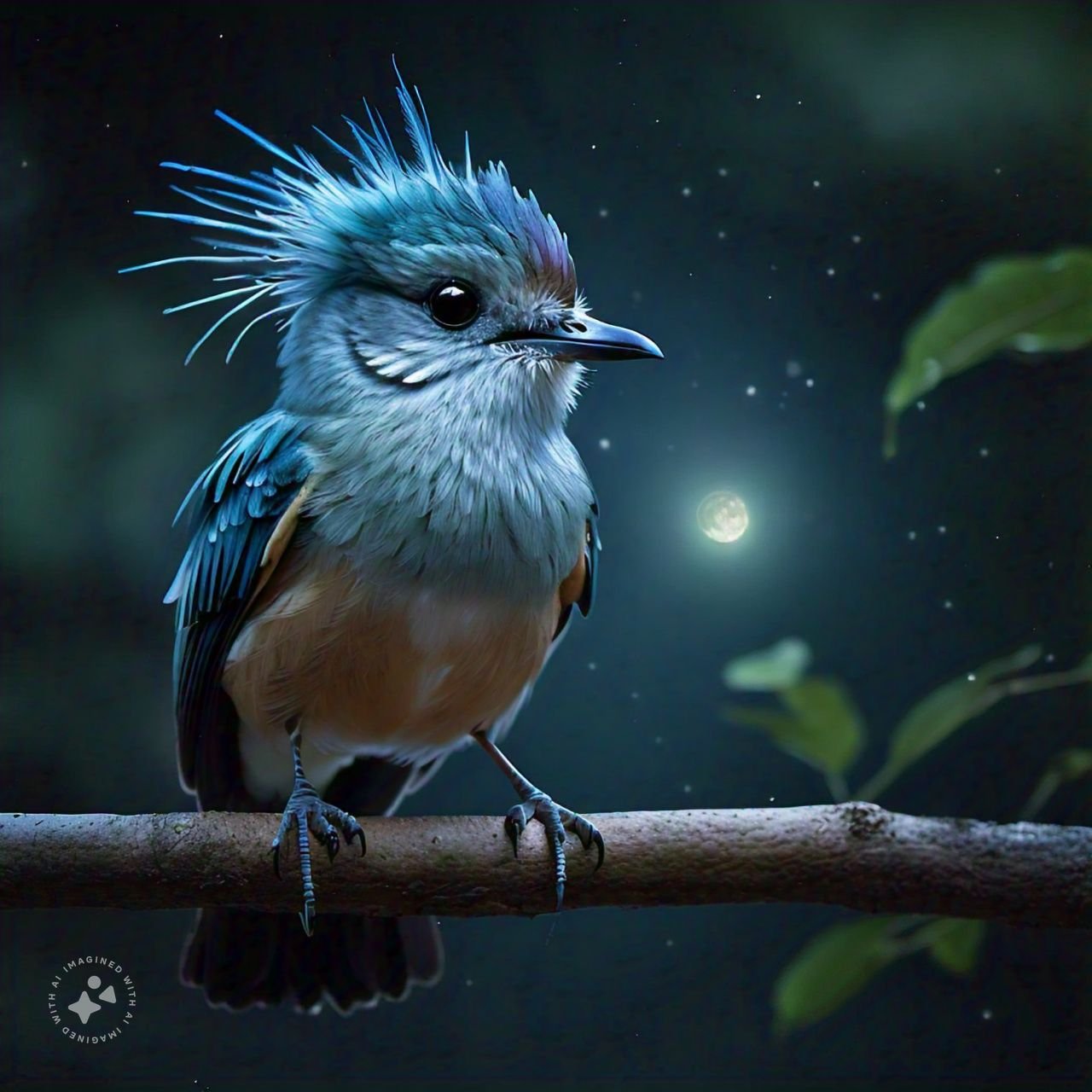Introduction
Overview of the Guacharo Activo
The Guacharo Activo, also known as the oilbird, is a unique species that captivates birdwatchers and ecologists alike. Found primarily in the tropical forests of South America, this remarkable bird is notable for its nocturnal lifestyle and its diet consisting mainly of fruit. Unlike most birds, the Guacharo has developed special adaptations that enable it to thrive in dark environments, such as caves where it roosts during the day. Understanding the Guacharo Activo is not just about the bird itself; it provides insights into the delicate ecosystems it inhabits. This article aims to explore the various aspects of the Guacharo’s ecosystem, emphasizing its significance within the broader context of biodiversity.
Importance of Ecosystem Study
Studying ecosystems like that of the Guacharo Activo is crucial for several reasons. First, ecosystems provide vital services that support life, such as clean air, water, and soil fertility. By understanding the roles species like the Guacharo play, we can gain insights into the health of these ecosystems. Furthermore, the Guacharo is an indicator species, meaning its well-being reflects the overall condition of its habitat. As climate change and human activity threaten biodiversity, studying such ecosystems becomes essential for conservation efforts. By examining the Guacharo’s interactions with its environment, we can identify the challenges it faces and develop strategies to protect both the bird and its ecosystem.
The Habitat of Guacharo Activo
Description of the Guacharo’s Natural Environment
The Guacharo Activo thrives in lush, humid tropical forests, particularly in areas rich in fruit-bearing trees. These forests provide an abundance of food, primarily consisting of palm fruits, figs, and other fleshy fruits that the bird feeds on. Additionally, the Guacharo often roosts in caves or other dark spaces, which offer protection from predators and a stable environment for nesting. The unique adaptations of the Guacharo, such as echolocation, help it navigate through these dark habitats, making it a fascinating subject for ecological study. The health of the Guacharo’s habitat is directly linked to its survival, highlighting the need for ongoing conservation efforts in these delicate ecosystems.
Key Geographic Locations
The Guacharo Activo is predominantly found in the northern regions of South America, particularly in countries like Venezuela, Colombia, and Ecuador. Key locations include the spectacular caves of the Caripe region in Venezuela, where thousands of Guacharos roost. These caves are not only vital for the birds but also play a significant role in the local ecosystem. Other notable areas include the Andean foothills and lowland rainforests, which provide suitable habitats for nesting and feeding. Protecting these geographic locations is essential for the survival of the Guacharo and other species that share the same habitat, emphasizing the interconnectedness of these ecosystems.
Behavioral Characteristics
Nocturnal Habits and Feeding Patterns
The Guacharo Activo is primarily nocturnal, meaning it is most active during the night. This behavior allows it to avoid many predators and take advantage of the cooler nighttime temperatures. The bird has developed specialized feeding habits, primarily consuming fruits that ripen in the evening. Its keen sense of hearing and echolocation abilities enable it to navigate through dark environments and locate food sources effectively. These adaptations not only enhance its survival but also contribute to seed dispersal, playing a crucial role in maintaining the health of its ecosystem. Understanding these feeding patterns is vital for conservation efforts, as changes in food availability can significantly impact the Guacharo’s population.
Communication and Social Structure
Communication is a key aspect of the Guacharo’s social structure. These birds are known for their unique vocalizations, which include a series of whistles and clicks that serve various purposes, from attracting mates to warning of danger. Guacharos often roost in large groups, which fosters a complex social dynamic. This communal living allows for greater safety in numbers, as the presence of many individuals can deter predators. Understanding their social interactions provides valuable insights into their behavioral ecology and can inform conservation strategies aimed at preserving their populations.
Role in the Ecosystem
Predator and Prey Dynamics
The Guacharo Activo plays a significant role in the predator-prey dynamics of its ecosystem. As a fruit-eater, it helps control the populations of various fruiting plants, ensuring that no single species dominates the habitat. In turn, the Guacharo serves as prey for larger predators, including birds of prey and mammals. This balance is crucial for maintaining the health of the ecosystem, as it ensures a diverse array of species can coexist. Understanding these dynamics helps conservationists gauge the impact of losing any single species, including the Guacharo itself, which could have cascading effects throughout the ecosystem.
Contribution to Biodiversity
The Guacharo Activo contributes significantly to the biodiversity of its habitat. As a frugivore, it aids in the dispersal of seeds, which is vital for the regeneration of various plant species. This seed dispersal process not only promotes forest health but also creates habitats for other wildlife. The Guacharo’s unique adaptations and ecological niche demonstrate the interconnectedness of life within its environment. Preserving this biodiversity is essential for the resilience of ecosystems, especially in the face of climate change and habitat destruction, highlighting the need for targeted conservation efforts.
Conservation Status
Current Threats to Guacharo Activo
Despite its ecological importance, the Guacharo Activo faces several threats that jeopardize its survival. Habitat destruction due to deforestation and agricultural expansion poses the most significant risk. As forests are cleared, the Guacharo loses its natural roosting and feeding sites, leading to population declines. Additionally, climate change impacts, such as altered weather patterns, affect the availability of food sources. Human disturbance, particularly from tourism and mining activities, can also disrupt their breeding and feeding habits. Identifying and mitigating these threats is critical for ensuring the long-term survival of the Guacharo and its ecosystem.
Conservation Efforts and Strategies
Various conservation efforts are underway to protect the Guacharo Activo and its habitat. Organizations are working to establish protected areas, ensuring that critical habitats remain intact. Community-based conservation initiatives are also gaining traction, engaging local populations in protecting their natural resources. Education and awareness campaigns aim to highlight the Guacharo’s ecological role and the importance of biodiversity. By fostering a sense of stewardship among local communities, these efforts seek to create sustainable practices that benefit both wildlife and human populations. Collaboration among governments, NGOs, and local stakeholders is vital for effective conservation strategies.
Interactions with Other Species
Symbiotic Relationships
The Guacharo Activo engages in several symbiotic relationships that enhance its survival and that of other species. For example, its role as a seed disperser promotes healthy plant populations, which in turn provides food and shelter for various animals. Some fruit-bearing trees rely on the Guacharo for seed dispersal, creating a mutually beneficial relationship. These interactions emphasize the interconnected nature of ecosystems and the importance of preserving species like the Guacharo to maintain ecological balance. Understanding these relationships can help guide conservation efforts and ensure the protection of entire ecosystems.
Impact on Flora and Fauna
The Guacharo’s feeding habits significantly impact the flora and fauna of its habitat. By consuming fruits and dispersing seeds, it plays a crucial role in forest regeneration. This process not only supports the growth of various plant species but also provides food and habitat for numerous other animals. The presence of the Guacharo contributes to the overall health and stability of the ecosystem, highlighting the importance of protecting this unique bird. As biodiversity declines, the impact on other species can be profound, underscoring the need for conservation measures that consider the entire ecosystem.
Human Influence
Cultural Significance
The Guacharo Activo holds cultural significance in various regions of South America. Indigenous communities often regard the bird as a symbol of the rainforest’s richness. Folklore and traditions surrounding the Guacharo contribute to local identities and highlight the interconnectedness of humans and nature. By understanding and promoting this cultural significance, conservationists can foster greater community involvement in protecting the Guacharo and its habitat. Education initiatives that celebrate the bird’s role in local cultures can encourage sustainable practices and awareness of environmental issues.
Ecotourism and Its Effects
Ecotourism presents both opportunities and challenges for the Guacharo Activo. On one hand, it can provide funding for conservation efforts and raise awareness about the importance of protecting natural habitats. Tourists are often eager to learn about the Guacharo and its unique behaviors, leading to increased interest in biodiversity conservation. However, unmanaged tourism can pose risks, such as habitat disturbance and increased pressure on local resources. Striking a balance between ecotourism and conservation is essential for ensuring the Guacharo’s survival while also benefiting local communities economically.
Research and Future Studies
Ongoing Research Initiatives
Research initiatives focused on the Guacharo Activo are essential for understanding its ecology and informing conservation efforts. Studies examine various aspects, such as population dynamics, feeding behaviors, and habitat requirements. These investigations often involve collaboration between universities, research institutions, and local organizations, creating a comprehensive approach to conservation. By gathering data on the Guacharo’s life cycle and interactions with its environment, researchers can identify critical areas for protection and develop strategies to mitigate threats. Continued research is vital for adapting conservation measures in a changing world.
Importance of Continued Study
The importance of continued study on the Guacharo Activo cannot be overstated. As environmental conditions evolve, ongoing research will help track changes in populations and habitats. This knowledge is crucial for effective management strategies that can adapt to new challenges, such as climate change and habitat loss. Additionally, understanding the Guacharo’s role in its ecosystem will aid in preserving not only the species but also the myriad of other plants and animals that depend on its habitat. Investing in research is an investment in the future health of our planet’s biodiversity.
Conclusion
Summary of Key Points
The Guacharo Activo is a remarkable bird that plays a vital role in its ecosystem. Its unique adaptations and behaviors highlight the complexity of the natural world, emphasizing the importance of biodiversity. However, this species faces significant threats from habitat destruction and climate change. Understanding its habitat, behavior, and interactions with other species provides valuable insights into conservation efforts. Protecting the Guacharo and its environment is essential for maintaining the health of tropical ecosystems.
Call to Action for Conservation
To ensure the survival of the Guacharo Activo and the ecosystems it inhabits, collective action is required. Individuals, communities, and organizations must work together to raise awareness, support conservation initiatives, and promote sustainable practices. By fostering a deeper understanding of the Guacharo’s ecological role, we can inspire a commitment to preserving our natural heritage. Let us take action today to protect this extraordinary bird and the vital ecosystems that support it, for the benefit of future generations.
FAQ’s
What is the Guacharo Activo?
The Guacharo Activo, or oilbird, is a unique, nocturnal bird found in South America, known for its fruit-based diet and echolocation abilities.
Where does the Guacharo live?
Guacharos primarily inhabit tropical forests in northern South America, especially in Venezuela, Colombia, and Ecuador, often roosting in dark caves.
What do Guacharos eat?
Guacharos mainly eat fruits, particularly palm fruits and figs, which they locate at night using their keen sense of hearing.
Why is the Guacharo important to its ecosystem?
Guacharos help disperse seeds, promoting plant growth and forest health. They play a crucial role in maintaining biodiversity within their habitats.
How can we help conserve the Guacharo Activo?
Supporting conservation organizations, spreading awareness, and promoting sustainable practices can help protect the Guacharo and its habitat for future generations.



